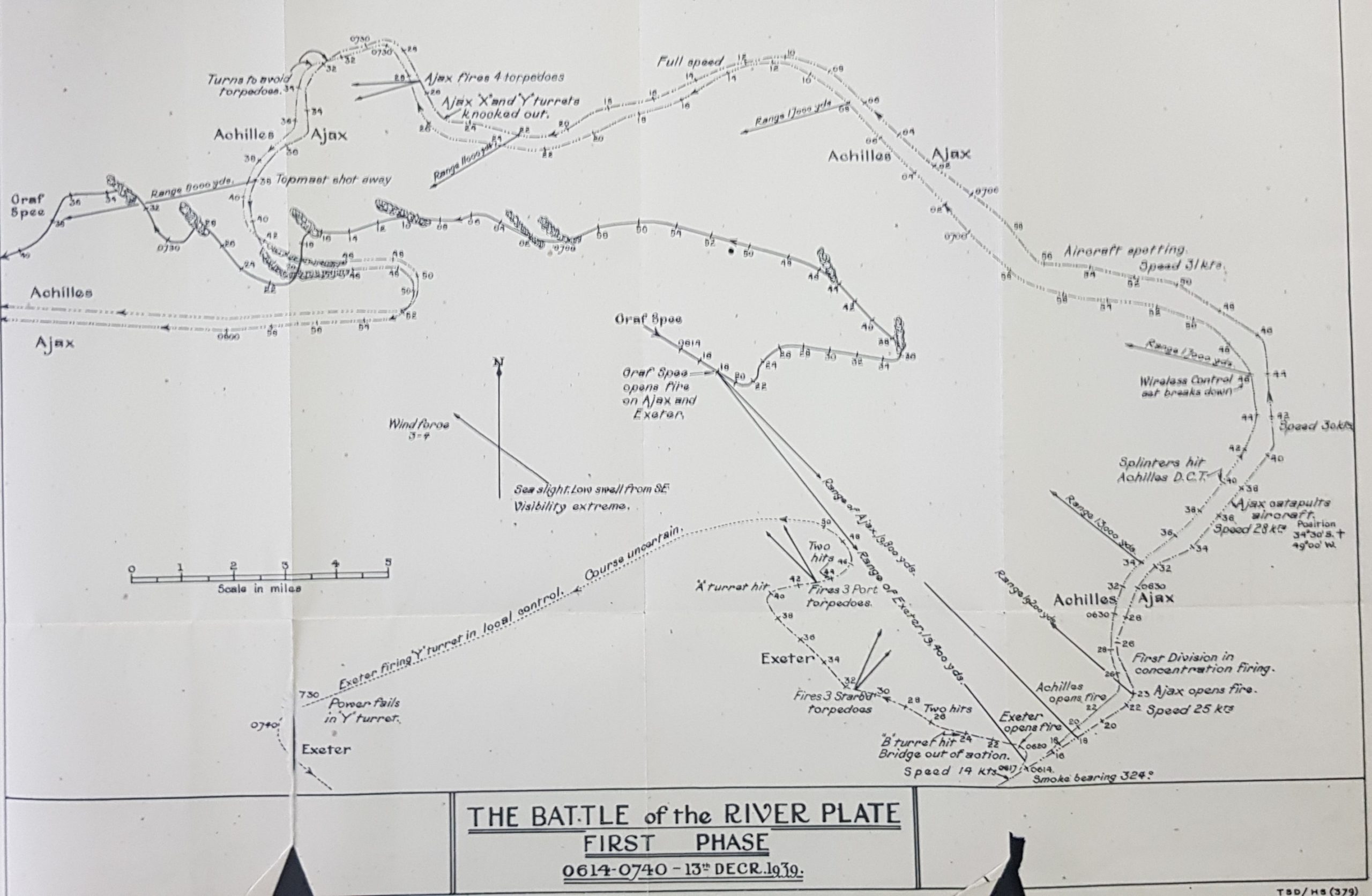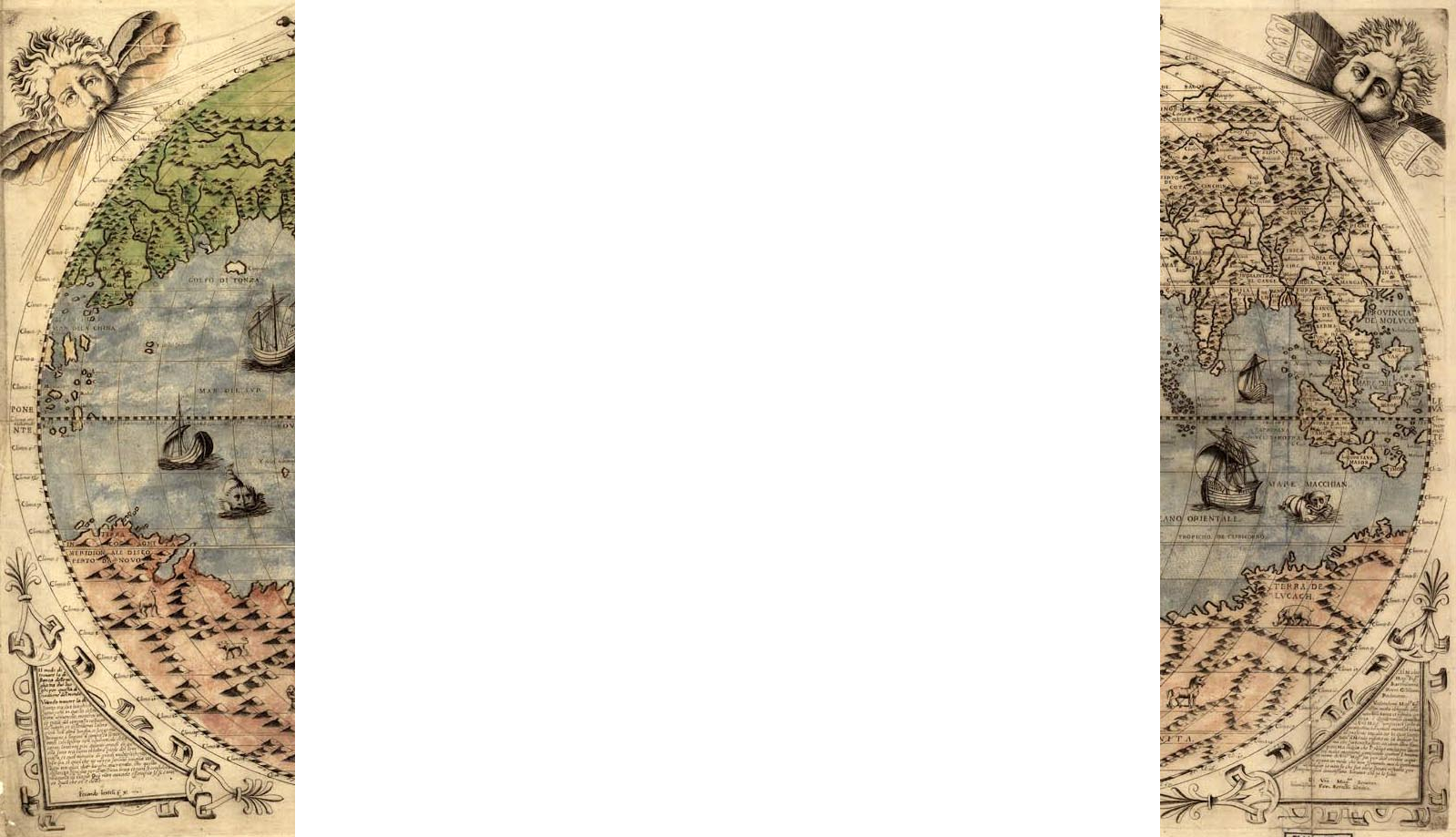The Battle of the River Plate is itself, in contrast to all the movements and strategizing which had gone into arranging the circumstances for its happening, a rather accidental affair. The Graf Spee’s last working scout aircraft had failed the previous day and the British despite the relatively easier resupply were conserving theirs; based largely on the assumption the first they would hear off their target was it attacking a merchant ship – in which case flying the plane to the transmission sauce would be a key way of guiding in the force. This was what had been practiced as a likely engagement pattern in exercises prior to the war.
Harwood’s advantages were numbers and speed – for these all Langsdorff had was range, but that would only count if he could concentrate it and keep it concentrated. The mutually supporting but attack axis divergent attack method beautifully served to both split up the fire (stop it concentrating) and when combined with speed made holding the British at maximum range was pretty much an impossible task. As especially once the South America Squadron had divided into HMS Exeter and first division HMS(HMNZS) Achilles* & HMS Ajax, coming from different angles meant if Langsdorff tried to keep one at range then the other would close.
The speed difference also meant once he was found, without sufficient distance provided by an alert from his aircraft, there was no chance of escape – his only option was to attack straight away as only by denying the enemy time to organise might he get out of it successfully. For Harwood’s force their plan was always to attack immediately, whether day or night. It was under such circumstances and with such considerations, that when instead of a day of chase, they literally ran into each other at around 06:00hrs – they charged. Thanks to mast configuration, this action, along with their breaking up actually made Langsdorff think the two light cruisers were destroyers.** Unfortunately for Langsdorff he was not so lucky/unlucky.***

Battle of the River Plate, Chart provided by Rear Admiral Harwood after the Battle & included in ADM 186/794
* Achilles would have her British flag shot away during the battle, would fight the whole under the New Zealand ensign, with a overwhelmingly New Zealand crew and in 1941 would join the Royal New Zealand Navy on its formation… this is why HMNZS has been put in brackets with her name throughout – to signify this contribution.
** To fit that configuration they would have had to be Tribal class destroyers – something which considering their history might not have gone that well for Langsdorf
*** To keep within the 1000 word target, please enjoy the video for the rest!
Bibliography
Clarke, A., 2014. Sverdlov Class Cruisers, and the Royal Navy’s Response. [Online]
Available at: https://globalmaritimehistory.com/sverdlov_class_rn_response/
[Accessed 11 February 2018].
Clarke, A., 2018. Royal Navy Cruisers (1): HMS Exeter, Atlantic to Asia!. [Online]
Available at: https://globalmaritimehistory.com/royal-navy-cruisers-1-hms-exeter-atlantic-asia/
[Accessed 30 March 2018].
Friedman, N., 2010. British Cruisers; Two World Wars and After. London: Seaforth Publishing.
Hore, P., 2018. Henry Harwood; Hero of the River Plate. Barnsley: Seaforth Publishing.
Konstam, A., 2015. Commonwealth Cruisers 1939-45. Oxford: Osprey Publishing Ltd.
Millington-Drake, E., 1965. The Drama of GrafSpee and the Battle of the Plate. London: Peter Davies.
Morris, D., 1987. Cruisers of the Royal and Commonwealth Navies. 1st ed. Liskeard: Maritime Books.
TNA – ADM 116/4109, 1940. Battle of the River Plate: reports from Admiral Commanding and from HM Ships Ajax, Achilles and Exeter.. London: United Kingdom National Archives (Kew).
TNA – ADM 116/4320, 1941. Battle of the River Plate: British views on German pocket battleship Admiral Graf Spee in Montevideo harbour; visits to South America by HMS Ajax and HMS Achilles. London: United Kingdom National Archives (Kew).
TNA – ADM 116/4470, 1940. Battle of the River Plate: messages and Foreign Office telegrams. London: United Kingdom National Archives (Kew).
TNA – ADM 186/794, 1944. Battle Summary No 26: The Chase & Destruction of the “Graff Spee” 1939. London: United Kingdon National Archives(Kew).
Whitley, M. J., 1996. Cruisers of World War Two; An International Encyclopedia. London: Arms and Armour Press.






